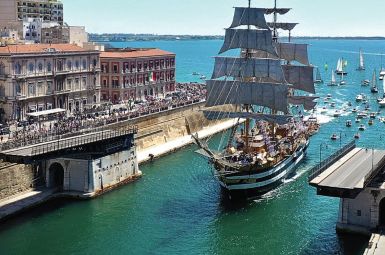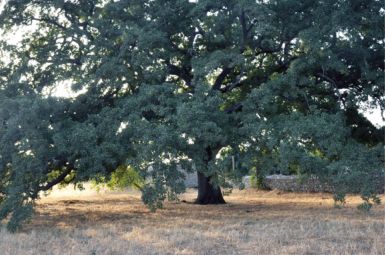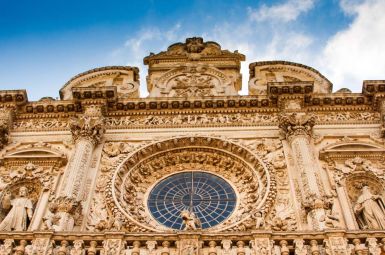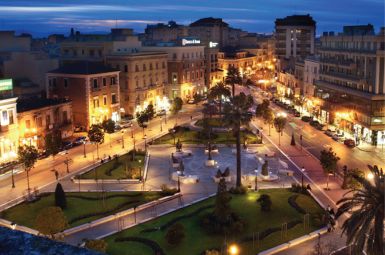
Castell’Arquato
Il Borgo di Castell’Arquato
Castell’Arquato: Dove il Sogno Medievale Incontra la Storia
Sospeso con eleganza sulla Val d’Arda, in provincia di Piacenza, sorge Castell’Arquato, un borgo che sfida il tempo. Non è semplicemente un paese; è una vera e propria cittadella fortificata, un capolavoro architettonico giunto a noi in una conservazione pressoché perfetta. Riconosciuto come uno dei “Borghi più Belli d’Italia” e insignito della Bandiera Arancione del Touring Club Italiano, Castell’Arquato offre un’esperienza immersiva nel cuore del Medioevo padano.Il Triumvirato del Fascino Storico
Il nucleo monumentale del borgo si sviluppa attorno alla Piazza del Comune, un palcoscenico di pietra dove tre magnifici edifici narrano secoli di potere e fede:1. La Rocca Viscontea: L’Occhio del Duca
Dominante sulla collina, la Rocca Viscontea è la sentinella incontrastata della valle. Eretta da Luchino Visconti tra il 1342 e il 1349, questa imponente fortezza militare incarna l’architettura difensiva per eccellenza, con le sue mura merlate e la maestosa Torre Quadrata. Salire sulla sua cima significa abbracciare con lo sguardo un panorama infinito che spazia sulla Pianura Padana e sui vigneti circostanti. La Rocca non è solo storia; è anche leggenda: fu set cinematografico del celebre film Ladyhawke, confermando la sua atmosfera fiabesca e senza tempo.2. La Collegiata di Santa Maria Assunta: Il Cuore Romanico
Accanto alla Rocca, la Collegiata di Santa Maria Assunta, consacrata nel 1122, rappresenta l’anima spirituale del borgo. Un gioiello dell’arte romanica, costruito in pietra, che custodisce un fascino austero e prezioso. Da non perdere il suo Chiostro e il Battistero, testimoni silenziosi di una storia millenaria.3. Il Palazzo del Podestà: La Culla del Governo
Completa il trittico monumentale il Palazzo del Podestà, con la sua caratteristica loggia. Un tempo centro nevralgico della vita civile e amministrativa, oggi è un simbolo tangibile della prospera vita comunale e signorile che animava il borgo.Oltre il Borgo: Storie di Terra e di Cultura
L’identità di Castell’Arquato si arricchisce di sfumature uniche:- Il Gutturnio e l’Eccellenza Enologica: Il borgo si trova nella celebre Val d’Arda, cuore pulsante della produzione del Gutturnio, il rosso D.O.C. dei Colli Piacentini. Una terra che celebra la tradizione enogastronomica emiliana con sapori robusti e autentici.
- Viaggio nella Preistoria: Presso l’antico Ospitale di Santo Spirito è ospitato il Museo Geologico “G. Cortesi”. Un luogo sorprendente che svela l’antichissima origine marina del colle, conservando fossili e persino il cranio di una balenottera ritrovata tra i vicini calanchi.
- Patria della Lirica: Castell’Arquato ha dato i natali a Luigi Illica, poeta e librettista di fama internazionale, noto per la sua collaborazione con Giacomo Puccini (La Bohème, Tosca, Madama Butterfly). A lui è dedicato un museo, omaggio al genio che ha contribuito a definire l’opera italiana.

Il Borgo d’Italia
tutto da scoprire ed esplorare
Monumenti
CASTELL’ARQUATO: IL CUORE STORICO CHE VIVE NELLA PIÙ GRANDE PIAZZA MEDIEVALE D’ITALIA
Castell’Arquato non è solo un borgo: è un viaggio immobile nel tempo, dove l’imponente Piazza Monumentale racchiude, in uno scenario di ineguagliabile bellezza, i simboli millenari del potere religioso, politico e militare. Qui l’architettura non è solo storia, è maestosità che sfida i secoli.
La Rocca Viscontea: Fortezza e Vedetta sulla Storia
Dominante sul colle e visibile da tutta la Val d’Arda, la Rocca Viscontea è il simbolo incontrastato di Castell’Arquato. Eretta per volere di Luchino Visconti tra il 1342 e il 1349, non fu mai una residenza nobiliare, ma una pura e imponente macchina da guerra.
- Maestosità Militare: La sua struttura in cotto, con merlature a coda di rondine e quattro torri difensive, incarna l’essenza dell’architettura militare medievale.
- Esperienza Panoramica: Salire sul dongione (il mastio centrale) è un’esperienza da non perdere. Dalla sua cima, un tempo punto di osservazione strategico, oggi si gode di un panorama mozzafiato che spazia sulla Pianura Padana e sugli Appennini.
- Eredità Storica: All’interno, la Rocca ospita il Museo di Vita Medievale, che narra la storia del borgo e delle tecniche di fortificazione e di assedio, mantenendo viva l’eco dei secoli passati.
Palazzo del Podestà: Il Palcoscenico della Vita Civile
Di fronte all’austera Rocca, il Palazzo del Podestà (o Palazzo Pretorio) rappresenta il potere civile e amministrativo di Castell’Arquato. Costruito a partire dal 1293, è l’edificio che conferisce prestigio alla piazza.
- Armonia Gotica: Il suo aspetto più singolare è la suggestiva scalinata esterna, un elemento che dona armonia alla facciata e invita alla contemplazione.
- Il Cuore della Comunità: L’edificio si distingue per il portico “dei Notari” sormontato dalla Loggia delle Grida, il loggiato da cui l’araldo proclamava editti e leggi: un vero e proprio megafono della vita pubblica medievale.
- Oggi: Sebbene gli interni siano spesso accessibili solo in occasione di mostre ed eventi, il piano terra accoglie l’Ufficio del Turismo e la prestigiosa Enoteca Comunale, mantenendo il suo ruolo di centro pulsante del borgo.
Collegiata di Santa Maria Assunta: Un Monumento di Fede Romanica
La Collegiata di Santa Maria Assunta è l’edificio più antico della piazza, le cui origini si fanno risalire al 1117 su una preesistente Pieve. La sua architettura è un maestoso esempio di romanico lombardo.
- Drammaticità Architettonica: La Collegiata sorprende per la sua sobrietà esterna, ma soprattutto per l’imponente gruppo absidale in pietra arenaria, visibile dalla piazza, che crea un effetto prospettico di incomparabile concordanza.
- Tesori Nascosti: L’austero esterno nasconde interni riccamente decorati con volte e affreschi del Quattrocento e un Fonte Battesimale in pietra di grande pregio, risalente al VII-VIII secolo.
- Luogo di Meditazione: Adiacente si trova il Chiostro trecentesco, un luogo di pace da cui si accede al Museo della Collegiata, custode di arredi sacri e opere d’arte di inestimabile valore.
Castell’Arquato, con questo trittico monumentale, offre un’immersione completa in un passato perfettamente conservato. Quale di questi simboli desidera esplorare più in dettaglio?
Curiosità
CASTEL L’ARQUATO: IL BORGO DOVE STORIA E CINEMA SI INCONTRANO
Più che un borgo medievale, Castell’Arquato è un palcoscenico a cielo aperto, un luogo dove ogni pietra, ogni piazza, ogni torre non racconta solo la storia, ma custodisce leggende e segreti di Hollywood. Lasciatevi sedurre dalle curiosità che rendono questo gioiello piacentino una meta imperdibile.
Il Set di Ladyhawke: Quando il Medioevo Incontrò Hollywood
Negli anni ’80, l’atmosfera immutata di Castell’Arquato fece innamorare un regista: Richard Donner, che la scelse come scenografia naturale per l’epico fantasy “Ladyhawke” (1985).
- La Trasformazione Cinematografica: La Piazza Monumentale, con la Rocca Viscontea e il Palazzo del Podestà, divenne il cuore delle riprese. Per esigenze sceniche, gli scenografi di Cinecittà modificarono temporaneamente il borgo: innalzarono muri merlati, costruirono passerelle di legno sul ponte levatoio e coprirono la Loggia del Podestà, rendendo il borgo ancora più fedele all’immaginario medievale.
- Le Comparse Locali: L’evento ruppe la routine del paese, coinvolgendo circa cinquanta comparse locali. Molti ricorderanno ancora di aver indossato scomodi costumi di juta e di aver ricevuto il compenso in contanti da una valigetta, vivendo in prima persona il fascino e le fatiche di un set hollywoodiano.
- La Scena Iconica: La suggestiva Rocca Viscontea fu teatro di una delle scene più memorabili, con l’innalzamento di finti impiccati sulla sua parete esterna, a oltre dieci metri di altezza, trasformando per un attimo la storia in leggenda cinematografica.
Il “Borgo degli Innamorati” e la Leggenda del Fantasma
Castell’Arquato è conosciuto anche come il “Borgo degli Innamorati”, un soprannome romantico alimentato da una storia tragica che riecheggia tra le mura della Rocca.
- Laura e Sergio: La Rocca Viscontea, un tempo prigione mandamentale, è il teatro della leggenda di Laura e Sergio, due sfortunati amanti del XVII secolo la cui vicenda evoca l’intensità di un Romeo e Giulietta piacentino.
- Il Dramma e il Fantasma: La storia di un amore osteggiato che sfociò in una vicenda di sangue, tradimento e vendetta ha lasciato un’impronta indelebile. Si narra che gli spiriti di Laura, Sergio e un loro amico, “Spadone”, si aggirino ancora oggi nei meandri della fortezza, rendendo le visite serali e notturne particolarmente suggestive e misteriose.
Curiosità Paleontologiche e Acque Miracolose
L’importanza del territorio arquatese non si limita all’età medievale, ma affonda le radici in un passato remoto, ricco di fascino naturalistico.
- Il Museo Geologico: L’Ospedale di Santo Spirito ospita oggi il Museo Geologico “Giuseppe Cortesi”, che testimonia come la Val d’Arda fosse, milioni di anni fa, un’area marina. Il museo conserva una ricca collezione di reperti fossili, inclusi scheletri completi di balenottere e cetacei, scoperti proprio in queste colline.
- La Fonte Curativa: Un tempo, l’acqua della Fonte di Rio Orzo, situata ai limiti del centro abitato, era famosa e ricercata per le sue proprietà curative. Grazie all’alto contenuto di magnesio, era considerata rinfrescante e veniva utilizzata per scopi terapeutici, un dettaglio che testimonia la ricchezza naturale e storica del sottosuolo arquatese.
Personaggi
I GIGANTI DI CASTELL’ARQUATO: IL GENIO E LA STORIA CHE HANNO PLASMATO IL MONDO
Castell’Arquato, scrigno medievale e Patrimonio d’Italia, non è celebre solo per la sua bellezza architettonica e le leggende d’amore. Questo borgo ha dato i natali a personalità che hanno lasciato un segno indelebile, dalla lirica mondiale alla scienza della terra, dimostrando come un piccolo centro possa generare un impatto globale.
Luigi Illica: Il Genio Ribelle che Scrisse la Storia dell’Opera
Tra i vicoli acciottolati di Castell’Arquato nacque uno dei librettisti più celebri e influenti nella storia dell’opera: Luigi Illica (1857-1919). La sua figura non fu quella del letterato di corte, ma del “genio ribelle”, un uomo dalla vita avventurosa e dal temperamento vivace che forgiò le più grandi emozioni del melodramma.
- Il Triumvirato d’Oro: Illica è conosciuto internazionalmente per aver formato un sodalizio artistico epocale con Giacomo Puccini e il co-librettista Giuseppe Giacosa. Da questa collaborazione nacquero capolavori immortali che continuano a emozionare i pubblici di tutto il mondo:
- La Bohème
- Tosca
- Madama Butterfly
- Capolavori Solisti: Il suo talento non si limitò al sodalizio pucciniano: da solo, firmò libretti di enorme successo come l’iconico Andrea Chénier di Umberto Giordano e Iris di Pietro Mascagni.
- L’Eredità Arquatese: Nonostante i suoi viaggi e la sua appartenenza alla Scapigliatura milanese, Illica tornò sempre al suo paese natio, dove è sepolto e onorato con il Museo Luigi Illica, un moderno spazio espositivo che ne custodisce manoscritti, spartiti e cimeli. A lui è dedicato anche il prestigioso Premio Internazionale Luigi Illica, un riconoscimento biennale che celebra le eccellenze del mondo lirico e culturale.
Giuseppe Cortesi: Il Pioniere dei Fossili Piacentini
Un altro nome legato indissolubilmente al patrimonio culturale e scientifico di Castell’Arquato è quello di Giuseppe Cortesi, sebbene le fonti storiche lo ricordino più per la sua opera che per una documentata nascita nel borgo. Egli è il punto di riferimento e l’ispirazione per la collezione paleontologica che rende unica la zona.
- Il Custode del Pliocene: A lui è intitolato il Museo Geologico “Giuseppe Cortesi”, uno dei centri più importanti d’Italia per lo studio dei reperti fossili del Piacenziano. Cortesi si dedicò con passione alla catalogazione e valorizzazione dei resti marini riemersi dai calanchi, testimonianza che l’area era un tempo sommersa dal mare.
- Giganti del Passato: Il Museo, oggi ospitato nello storico Ospedale Santo Spirito, espone reperti eccezionali, inclusi scheletri fossili di balenottere e cetacei rinvenuti sulle colline circostanti. Questo legame tra la figura di Cortesi e i fossili ha trasformato Castell’Arquato in un fondamentale crocevia per paleontologi e appassionati.
Attraverso le figure di Luigi Illica e Giuseppe Cortesi, Castell’Arquato si rivela non solo un magnifico borgo medievale, ma un luogo dove l’arte, la storia e la scienza si fondono, offrendo una prospettiva unica sul passato e sull’eredità culturale italiana.
Ricette Tipiche
LA TAVOLA DI CASTELL’ARQUATO: UN VIAGGIO CULINARIO NELLA TRADIZIONE PIACENTINA
La gastronomia di Castell’Arquato è un inno alla tradizione contadina piacentina, un’arte che celebra la semplicità degli ingredienti e la ricchezza dei sapori. Qui, ogni piatto non è solo nutrimento, ma un pezzo di storia servito in tavola. Preparatevi a scoprire le eccellenze che rendono questo borgo medievale una tappa imprescindibile per ogni gourmet.
I Primi Piatti: L’Eccellenza della Pasta Ripiena e Povera
Il cuore della cucina arquatese pulsa al ritmo della pasta fresca, rigorosamente fatta a mano, che si divide tra l’opulenza delle feste e l’ingegno della tradizione povera.
- Anolini in Brodo (Anvein): La Regola d’OroGli anvein sono il simbolo del Natale e delle grandi occasioni. A Castell’Arquato, però, il ripieno si distingue da quello del resto del Piacentino: qui è tradizione utilizzare principalmente il Grana Padano, amalgamato con pane grattugiato, uova e odori, in sostituzione o affiancamento al classico stracotto di manzo. La vera regola per un arquatese è il brodo in “terza”, preparato con la lenta cottura di manzo, vitello e gallina, per una ricchezza e un aroma ineguagliabili.
- Pisarei e Fasò: Il Capolavoro ContadinoQuesto è il piatto della tradizione povera che ha conquistato tutti. I pisarei sono minuscoli gnocchetti ottenuti arrotolando e schiacciando sotto il dito un piccolo pezzetto di pasta di farina e pane raffermo (un espediente per risparmiare la farina). Vengono serviti con il sugo di fasò (fagioli borlotti) arricchito dal pistà ‘d grass (un battuto di lardo, aglio e prezzemolo), che dona al piatto una profondità di gusto calda e avvolgente.
Salumi e Secondi: Il Gusto Autentico della Val d’Arda
La Val d’Arda, zona di cui Castell’Arquato è centro nevralgico, è celebre per i suoi salumi, riconosciuti a livello europeo.
- Il Trittico DOP Piacentino: Nessun pasto può dirsi completo senza un assaggio dei Salumi Piacentini DOP. Sulla tavola troverete sempre la Coppa Piacentina DOP, il Salame Piacentino DOP e la Pancetta Piacentina DOP. Questi salumi, stagionati in un microclima ideale tra la pianura e le prime colline, offrono un antipasto di assoluta eccellenza.
- Curiosità: La Coppa Piacentina DOP, in particolare, viene talvolta utilizzata anche come ripieno per i ravioli, una variazione moderna e audace della pasta ripiena locale.
I Dolci delle Feste: La Tradizione Stagionale
Anche la pasticceria di Castell’Arquato segue il ritmo delle ricorrenze, proponendo dolci legati a specifici periodi dell’anno.
- Tortelli Dolci di San Giuseppe: Tipici del periodo natalizio o della festa del Santo Patrono, sono una pasta ripiena fritta, dolce e fragrante, che può essere gustata sia vuota che con ripieni tradizionali.
- La Torta di Mandorle: Un’altra specialità caratteristica del borgo, spesso affiancata dalla celebre Torta di Vigolo Marchese, un dolce al cioccolato proveniente dalla vicina frazione, amato per la sua semplicità e l’equilibrio degli ingredienti.
Abbinare questi sapori robusti e autentici ai vini DOC dei Colli Piacentini, come il frizzante Gutturnio o l’aromatico Malvasia, completerà l’esperienza, sigillando il vostro viaggio culinario nella tradizione di Castell’Arquato.


